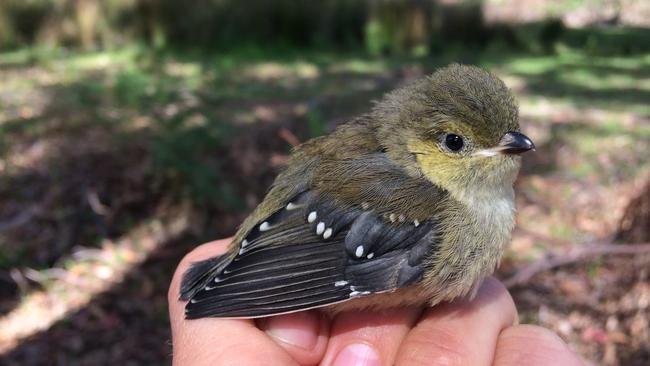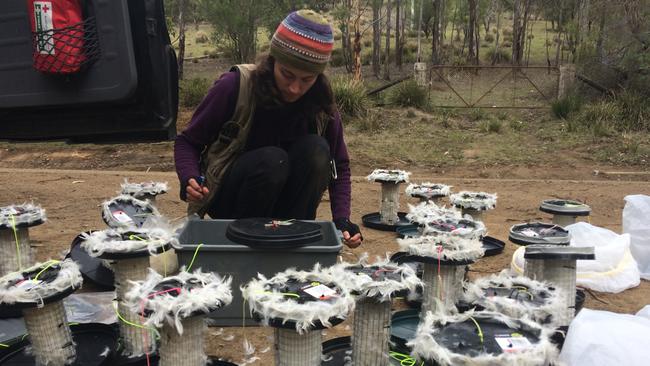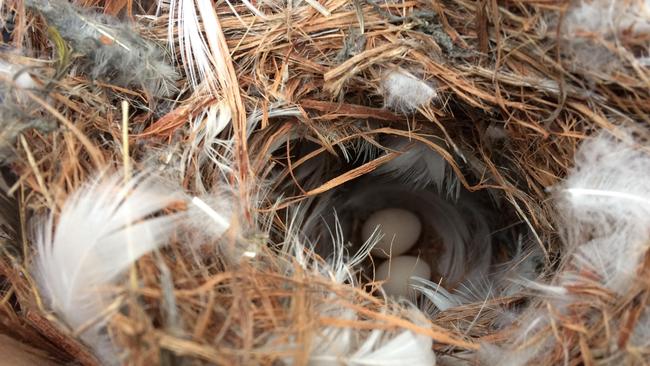ANU has found a solution for the threat posed by parasitic flies
Scientists at ANU have found an ingenious way to protect forty-spotted pardalote chicks from a major threat. SEE THE FINDINGS >>
News
Don't miss out on the headlines from News. Followed categories will be added to My News.
- Talking Point: Putting Tasmanian species on a fast track to extinction
- Central Coast Council clamps down on cats to protect beach birdlife
THE nesting instincts of one of Tasmania’s rarest birds have been harnessed to help the birds save their own babies from a major threat.
Parasitic flies (Passeromyia longicornis) are a major cause of death among baby forty-spotted pardalotes, killing as many as nine out of every 10 chicks.

Researchers at the Australian National University (ANU) have found a clever way to help pardalotes “self-fumigate” their nest to protect their young from deadly parasites.
The ANU team created wire dispensers stuffed with sterilised chicken feathers that were treated with bird-safe insecticide and hung them in trees near pardalote nests.
“Manually spraying pardalote nests with a bird safe insecticide has proven to be effective, but the birds nest high in trees so finding and accessing their nests is very difficult,” PhD researcher Ms Fernanda Alves said.

“Pardalotes spend a lot of time looking for bird feathers to build their nests with, so we decided to make use of this natural instinct to get insecticide into nests
“The results were fantastic. Birds took the treated feathers back to their nests and as a result 95 per cent of the chicks survived – whereas those that used untreated feathers had only an eight per cent survival rate.
“These feather dispensers provide us with a very cheap and effective way to improve nest survival of forty-spotted pardalotes.”
Ms Alves said protecting the chicks from the parasites could be crucial to the endangered species’ survival.

“This species has already suffered major population declines due to habitat loss. This parasite could now lead to the extinction of this unique species if nothing is done,” she said.
The research has been published in the scientific journal Animal Conservation.
The forty-spotted pardalote is found only in Tasmania.
It prefers forests and woodlands close to the coast, and lives in fragmented population in southern Tasmania and on Flinders, Bruny and Maria islands.


